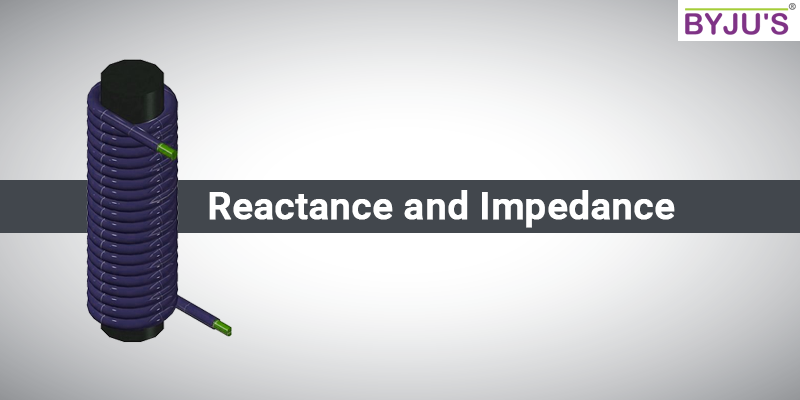| Table of Contents |

What is Reactance?
- The motion of electrons constitutes the current generation in an electrical circuit and any inertia against this motion of electrons constitutes reactance.
- It is primarily generated due to the elements inductance or capacitance.
- In a magnetic field, it resists the change in the current of the element, whereas in an electric field it resists the change in voltage of the element.
- It is mathematically represented by the letter X and has its unit of measurement in the form of the Greek symbol ohm.
- It is also known as the imaginary resistance of an electrical circuit.
Types of Reactance
There are two primary types of reactance:
- Capacitive reactance (Ohms is the unit)
- Inductive reactance (Ohms is the unit)
Capacitive Reactance
When a capacitor is connected to a circuit with AC supply, there is no simultaneous change in the capacitor voltage and capacitor current. The potential difference across the capacitor is dependent on the AC power supply. Below is the graph illustrating the change in current and potential difference. The current is maximum when the potential difference is at zero.
The capacitive reactance for a capacitor with capacitance C connected in the circuit along with AC power supply is given as:
\(\begin{array}{l}X_{C}=\frac{1}{2\pi fC}\end{array} \) |
Where,
- XC is the capacitive reactance
- f is the frequency of AC power supply
- C is the capacitance
Inductive Reactance
In inductive reactance, the current across an inductor changes when potential difference develops across it. The potential difference and rate of change of current are proportional to each other.
The inductive reactance for an inductor with inductance L connected in the circuit along with AC power supply is given as:
| XL = 2πfL |
Where,
- XL is the inductive reactance
- L is the inductance of the inductor
- f is the frequency of the alternating current
What is the difference between Reactance and Resistance?
| Parameter | Resistance | Reactance |
| Variation of current | Resistance is a property of an electrical component which opposes the flow of current | Reactance is a property of an electrical component which opposes the change in current |
| Power dissipation | Resistance leads to power dissipation | Reactance does not lead to power dissipation |
| Denoted by | Resistance is denoted by R | Reactance is denoted by X |
What is Impedance?
Impedance is a combination of resistance and reactance. It is essentially anything and everything that obstructs the flow of electrons within an electrical circuit. Hence, it affects the generation of current through the electrical circuit. It is present in all the possible components of the circuit and across all possible electrical circuits. Impedance is mathematically symbolized by the letter Z and has its unit as ohm. It is a superset of both resistance and reactance combined.
In phasor terms, impedance Z is represented as a combination of resistance R and reactance X as:
Z = R + j X
Where reactance X is a combination of Inductive XL and capacitive XC
X = XL + XC

Wattless Current
The component of the AC current that consumes zero power in a circuit is known as a wattless current. The average power dissipated in a AC circuit is given by the equation
P=VI cos ϕ
From this equation, we know that the average power dissipated not only depends on voltage and current but also on the cosine of the phase angle between them. In a circuit that contains only a capacitor or inductor, the phase difference between the voltage and current is π/2. Therefore, cosϕ becomes zero, and the power dissipated will be zero. There will be no power dissipation in spite of the current flowing in the circuit. This current which results in no power dissipation is referred to as wattless current.
Stay tuned with BYJU’S to learn more about Reactance, Impedance, and much more.

Comments